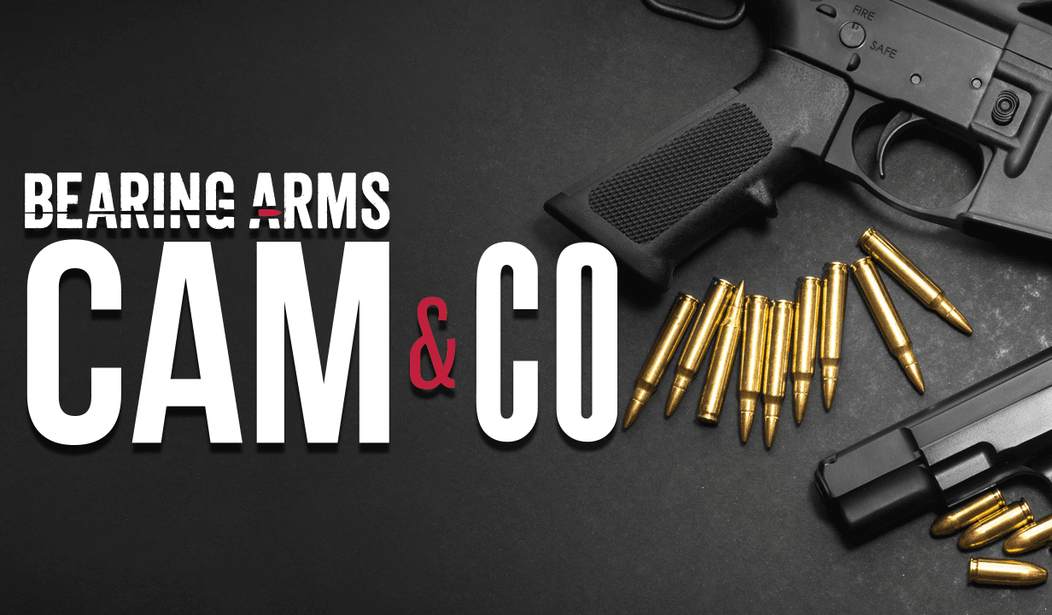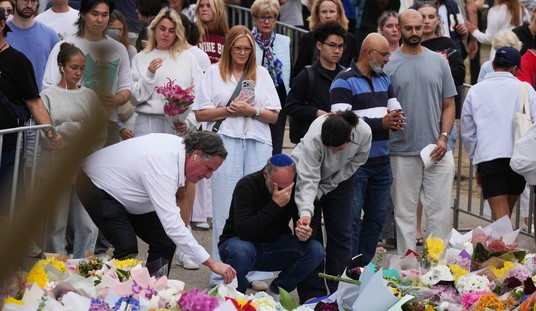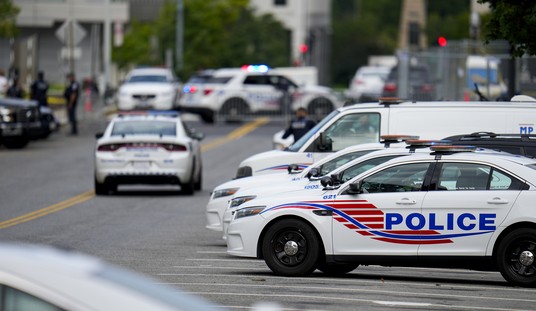A few days ago my buddy Michael Graham over at InsideSources.com asked me if I'd be interested in taking part in a point/counterpoint on the historic drop in homicides last year, responding to a piece by a gun control activist who claimed that the drop is proof that gun control is working. I happily accepted, and today both columns were published. Nick Wilson, senior director for Gun Violence Prevention at the Center for American Progress, claims in his piece that "this remarkable drop hasn’t been felt evenly across the country — and states with the weakest gun laws are seeing the least progress," while my position is that homicides shouldn't be dropping anywhere according to gun control's most fundamental tenet of faith; more guns equals more crime.
If that were true, then Wilson wouldn't be writing that states with "weak" gun laws (a term he never bothers to define) are seeing more modest reductions in homicides. With millions of new guns entering the hands of Americans over the past few years (the National Shooting Sports Foundation reports there've been more than 1,000,000 guns sold each month for more than 50 months straight), homicides should be soaring everywhere instead of plunging at a rate not seen in at least 60 years, if ever. And contrary to Wilson's claims, there are plenty of examples of significant decreases in the states with supposedly lax gun laws.
There are millions more guns around than there were four years ago, yet the vast majority of cities reported fewer homicides than they did in 2020. That includes several cities where permitless carry recently took effect. Atlanta reported a 22 percent decline in murders. Toledo, Ohio, saw a 34 percent drop in the homicide rate, almost identical to the 33 percent decline in Oklahoma City. The mayor of Miami boasted that the city had the fewest homicides since 1947, even though gun-control activists predicted the state’s permitless carry law would lead to more violence when Gov. Ron DeSantis signed it into law last year.
Those same advocates also asserted that the demise of “may issue” concealed carry laws, which required applicants to demonstrate a justifiable need to have a firearm in self-defense, would also lead to more dangerous cities. There’s no evidence that the Supreme Court’s decision in New York State Rifle & Pistol Association v. Bruen had any detrimental effect on public safety last year. Indeed, in the first full year that “shall issue” concealed carry was in place, Baltimore recorded fewer than 300 homicides for the first time in nearly a decade. At the same time, Los Angeles and New York saw 10 percent declines, even as more citizens were lawfully carrying firearms in self-defense.
Meanwhile, some of the most gun-controlled locales in the country saw their violence grow worse last year while it remained stagnant in many others. For instance, the District of Columbia reported the most murders in more than two decades. Bridgeport and New Haven, Connecticut, saw double-digit increases in homicide, with New Haven’s murders spiking by almost 65 percent. Seattle witnessed a 20 percent rise in the number of homicides, while the number of murders in Oakland, Calif., and San Francisco were almost unchanged from 2022.
I'll be delving deeper into Oakland's experience (and Gavin Newsom's panicked response) later today for our VIP members, but suffice it to say that if that gun-controlled city, with nearly 250,000 fewer residents than Constitutional Carry Oklahoma City, had almost twice as many homicides, then clearly the sheer number of gun control laws on the books isn't a guarantee of a safer society.
Wilson points to last year's significant decline in homicides in Denver as proof that "gun safety" laws have an immediate impact on crime rates, writing that the decline came after the state adopted "additional life-saving laws, including raising the minimum age to purchase guns, enacting waiting periods, and increasing access to justice for survivors" and noting that "Colorado was the most improved state on Giffords gun law rankings, moving from a B to an A-minus."
What he doesn't say is that between 2013 and 2023, while Colorado was implementing "universal" background checks, banning "large capacity" magazines, establishing a "red flag" law, and giving localities the power to impose gun control laws even more restrictive than those approved by the state legislature, violent crime and homicides soared by more than 20 percent, while neighboring states like Oklahoma, Kansas, Texas, Wyoming, and Nebraska each saw their violent crime rates decline by more than 20 percent. If Wilson is so sure that raising the age to purchase a firearm (a law, by the way, that is currently not being enforced because of a federal injunction) and a waiting period law that didn't even take effect until October of last year had such a major impact on Colorado's crime rate, then what does he think that says about the decade's worth of anti-gun restrictions that were signed into law as crime was increasing year after year?
As I write in my rebuttal, crime is local in nature; typically driven by a very small portion of the population, most of whom are already known to police and the criminal justice system. Cities that operate under the exact same gun laws can see wildly different trends in violent crime and homicides, which should also be impossible if Wilson's thesis had any validity. Missouri has firearms preemption, so the gun laws in Kansas City and St. Louis are essentially the same, yet Kansas City saw homicides increase by 7 percent last year while St. Louis recorded a 20 percent decline.
Still, homicides did decline in most U.S. cities last year, and if gun control wasn't responsible for the decrease, what was? Four years after the COVID pandemic led to widespread court closures and an emphasis on keeping offenders out of jail lest they turn into incubators for the virus, along with the rise in the Defund the Police movement and widespread riots and unrest in the wake of the death of George Floyd in Minneapolis, our dysfunctional criminal justice system has mostly returned to what passes for normal. Many of the same cities that were cutting police budgets are now looking for ways to hire more officers, while the lengthy delays in trials have largely subsided in most jurisdictions. If you're looking for some overarching reason to explain the nationwide trend, I'd say those developments have probably had the biggest effect on violent crime rates as a whole, but there are still plenty of both problems and solutions that are taking place at a local level as well.
Figuring out what led to the historic decline in homicides is complicated, and Wilson's simplistic take can't explain why cities like Oklahoma City and Tulsa saw such dramatic declines while Washington, D.C. went through the biggest one-year spike in decades. One thing is certain, however: more guns did not lead to more crime, and the fundamental premise of the gun control movement has been proven false yet again.









Join the conversation as a VIP Member